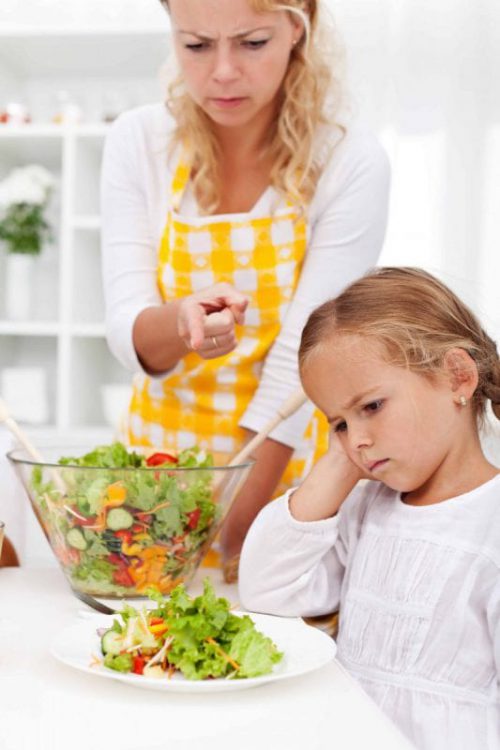“Healthier food choices” is a phrase we mostly associate with adults. Because seriously—what child is going to choose raw broccoli florets over gummy worms? And yet, as parents, we’ve all met the occasional child who turns down an offer of sweets at a play date.
It’s disconcerting to say the least. It tells us that:
- Someone is doing a better job of parenting than we are, at least on the nutritional front
- Contrary to what we had always supposed, some children will, in fact, choose broccoli florets over gummy worms
Which leads to the question: wouldn’t it be great if there were a magic formula for getting kids to make healthier food choices? Actually, according to researchers at the University of Pennsylvania’s Perelman School of Medicine and the Center for Health Incentives and Behavioral Economics, there IS such a formula, only it’s not magic. It’s science.
Healthier Food Choices
With not quite one-third of American children overweight or obese, and with no headway in reversing this tide over the past decade, the issue has drawn the attention of the public, at long last. First Lady Michelle Obama chose obesity as her focus during her husband’s time in office, and created the Chefs Move to Schools program, to promote healthier food choices in the public school system. Now the co-authors of an editorial published in JAMA Pediatrics say the key to healthier food choices involves three simple strategies.
The strategies, as outlined by Mitesh S. Patel, MD, MBA, MS, assistant professor, and Kevin G. Volpp, MD, PhD, professor, both of Medicine and Health Care Management at Penn State, use behavioral economics and choice architecture to encourage children to make healthier food choices. Now before you roll your eyes and shrug, those two terms are not as complicated as they sound. The first term, behavioral economics, recognizes that people behave in an irrational but often predictable manner when they make decisions. The second term, choice architecture, applies concepts drawn from behavioral economics to real-life situations.
1) Make Food Taste Good
What this means is that parents should acknowledge their children’s rational taste preferences and use them to change the way their children eat. That’s why the first part of this three-point strategy begins with recognizing the fact that when children choose foods that taste better; they are behaving in a rational manner. If a bag of caramels tastes better than a TVP burger, given a choice, the child will choose the caramels. That may not be a good choice, but it IS rational behavior on the part of the child.
How does this knowledge help us encourage children to make healthier food choices? By telling us that we have to make healthy food taste good if we want children to choose healthy food over less healthy food. Interestingly, Patel and Volpp discovered that when chefs are involved in school food preparation, children consume more healthful food.
2) Use Opt Out Food Items As Default
Children can be steered toward making healthier food choices and choosing healthier portion sizes by locating fruits and vegetables, for instance, at the beginning of a self-service food line in a school cafeteria. Normally, these items are placed further down the line, and a child’s plate may already be full at that point, so that she opts out of choosing these foods. By offering them first, when your child’s plate is relatively empty, you make it more likely your child will eat more of these foods in relation to other, less-healthy food items, such as pasta or burgers. Having used up a portion of her plate on these healthy food items, she has less room for other foods, so that she is unlikely to gorge herself on mac and cheese, for instance.
3) Make The Case For Nutrition An Attractive One
Kids don’t really care to hear that calcium makes their bones stronger. But if you tell them that drinking milk can help them tone their abs by making them burn fat more efficiently, now you’re TALKING. You have to make the benefits attractive to them from a child’s perspective. It’s also good to present health benefits in a way kids understand, for instance, a school cafeteria can institute a recognizable, color-coded scheme, such as a traffic light. Green would indicate that children can eat as much of a food as they like, whereas yellow would tell kids to be cautious about eating large amounts of a given food. A great website for explaining nutrition to kids is kidshealth.org. Patel and Volpp also found that offering small incentives, for instance 25 cents a day for making healthy food choices, led to a doubling of fruit and vegetable consumption in children, even after the financial incentive was discontinued!
In short, said Patel, “The results of this study highlight that the design of food choices can significantly influence behavior. Lessons from this intervention in school cafeterias could be applied more broadly in settings that impact both children and adults.”
Volpp suggested that, “Lessons from behavioral economics could be used to develop interventions that help build better eating habits. Default options, information framing and incentives are a few areas that show promise and should continue to be evaluated in future studies.”
The editorial that appeared in JAMA Pediatrics was based on, “Effects of choice architecture and chef-enhanced meals on the selection and consumption of healthier school foods: a randomized clinical trial” by Cohen et al, published in the same issue of JAMA Pediatrics.
